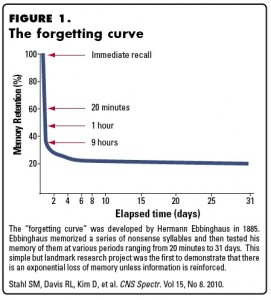The Hidden Power of Asynchronous Learning
How do you define the word “learning”?
If a student passes a test by cramming the day before, but they can’t remember the concepts months later, can we truly say they have “learned” the material? We know that when students cram for an exam, the information they consume is not going to be stored in long-term memory. To transfer information from their short-term to their long-term memory, students need repeated interaction with concepts over time. From this perspective, students who pass an exam by cramming are not learning much more than students who fail an exam. This phenomenon is caused by what Hermann Ebbinghaus called “The Forgetting Curve”.

Traditionally, students have attempted to capture information shared during a live class by taking notes. We know that students’ note taking ability varies greatly and the students who most need to review and reflect on the information may not be the best at copying notes with great fidelity.
If you create content on a VoiceThread, however, students can go back to review and reflect on your content exactly as it was delivered. If they review for the exam days, or even weeks later, they will also have the ability to ask questions right on the slides you created.
Spaced repetition and reflection are just some of the many benefits of asynchronous learning on VoiceThread. Educators who flip their class enjoy the benefits of this method, but we’d like to know how you design spaced repetition into your lessons. Leave us a comment below and share your secrets about building memory reconsolidation into your course design!
